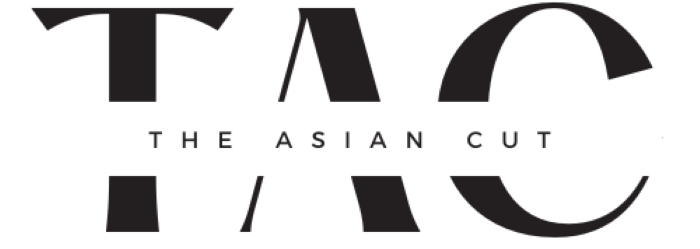With the release of The Boy and the Heron in 2023, famed Japanese director Hayao Miyazaki has returned to the helm of Studio Ghibli, effectively ending his own retirement. This latest film also supplants The Wind Rises, which came out in 2013, as the current bookend to the great filmmaker’s oeuvre. Thus, it is worth revisiting Miyazaki’s long-considered “last” film and examine how it originally served as the culmination of his storied career before his latest work stole some of its glory.
The Wind Rises loosely depicts the life of Jiro Horikoshi, a brilliant aeronautical engineer who built airplanes during World War II. This real-life figure is best known for creating the Mitsubishi A6M Zero, a carrier-based fighter plane. As a true showcase of Miyazaki’s famous love of aircraft, the historical film allows the animator to really stretch his imagination, rendering fantastical prototypes and showing Horikoshi’s (and Miyazaki’s) joy of beautiful aviation design.
The Wind Rises takes its uplifting title and message from a translated poem by Paul Valéry, a French poet who wrote “Le Cimetière Marin” in 1922. “The wind is rising. We must try to live,” is quoted a few times in the movie, signifying Horikoshi’s trajectory despite the troubles and difficulty around him.

Primarily set in the 1920s and 1930s, The Wind Rises follows the young man, who initially dreams of being a pilot but pivots toward designing planes as his near-sightedness prevents him from flying. Horikoshi’s all-encompassing love of flight brings him to Tokyo, where he studies engineering and lands a job at Mitsubishi building planes. He also visits Germany, where he marvels over their superior technology and aspires toward the innovation of Hugo Junkers, the pioneer of the all-metal plane. Another European aeronautics master who Horikoshi worships is Gianni Caproni, an Italian engineer who appears in the younger man’s dreams and spurs him onto greatness.
As Miyazaki’s supposed swan song—a title which The Wind Rises held for a decade before this year’s The Boy and the Heron—this work also functions as a not-quite-satisfactory look back at the filmmaker’s (and Japan’s) past. It is a little surprising that Miyazaki mentions events like the Manchurian incident and Japan’s departure from the League of Nations, framing it as the country choosing to forget certain conflicts it instigated out of imperialist aggression. It turns out, however, that Miyazaki is a big ol’ pacifist, and yet he still managed to rile up some of Japan’s more right-wing film-goers with The Wind Rises. But it’s too-little-too-late as these minor criticisms within the movie feel like blink-or-you’ll-miss-them moments.
While Miyazaki acknowledges some of Japan’s past, he doesn’t quite reckon with it through the heroic Horikoshi. Instead, Horikoshi is shown as an ingenious young man with his head in the clouds (a “kingdom of dreams”) while war’s devastation plays in the foreground. The protagonist repeatedly chooses to focus on the beauty over the bloodshed, conveniently escaping the violence, suffering, and poverty around him—and for the most part, other people allow him. Horikoshi’s Mitsubishi bosses bend over backwards to give him special treatment because he is the department’s creative star and their assignment—that is, Japan’s military superiority—is so important. Moreover, the woman Horikoshi loves, Nahoko Satomi, chooses to languish near him instead of recuperating far away from where he is working. By the end, Horikoshi gets off a little too easily after ignoring the darkness around him for so long, cocooned as he is in a blanket of privilege.
The hopeful ending of The Wind Rises rings a sweet but false note, allowing the main character to continue enjoying a paradisiacal dream, which is why The Boy and the Heron serves as a more interesting “final” film for Miyazaki (if we can tentatively call it so; Studio Ghibli’s vice president has claimed that the 82-year-old Miyazaki is already working on a new film). The Japanese title for the latter directly translates to How Do You Live?—a fitting question for the fuller reckoning that a colossal filmmaker and genre-unto-himself Miyazaki deserves.

The Boy and the Heron is clearly a far more personal film, taking plot points and themes from Miyazaki’s own history to build an intricate, symbolic, and metaphysical universe. The protagonist, Mahito Maki, is a young boy mourning the loss of his mother, who died in a hospital bombing. His father has remarried his late wife’s sister and moved the family to the countryside where several elderly and friendly servants watch over the boy. However, Mahito struggles with integrating into his new school and prefers to wander the estate grounds alone. He is stalked by a grey heron, who eventually brings the boy to a fantastical world inside a mysterious tower. Through his unexpected and magical journey, which involves searching for a mother-figure (and confronting a lot of oversized birds), Mahito finds ways to process his grief, forge new relationships, and look towards a more positive future.
The pre-teen protagonist shares many background details with his creator, Miyazaki. Both were born or lived in 1940s Tokyo, were close to their mothers, and had fathers who worked with planes. Both were also traumatized by war bombings and greatly impacted by the deaths of their mothers. These significant life events have been part of Miyazaki’s psyche for decades, seeping into the tone of some of his previous films, but they take centre stage in The Boy and the Heron.
Clearly, it is his most personal film, in which he works out how to move past fixed points in history and complicated emotions. Mahito, as Miyazaki’s analogue, learns to embrace chaos, imperfection, and uncertainty by the end of the film, leaning on newfound friends and family. Thus, in The Boy and the Heron, Miyazaki learns to finally cede control and perfection, two things that he has been well-known for throughout his career (and likely causes for trauma in his children and employees, if Studio Ghibli gossip is anything to go by. Poor Goro.)
Of course, I’m coming to this conclusion with the position of having seen The Boy and the Heron before ever watching The Wind Rises. After having viewed both this year, I find The Wind Rises less compelling and personal than Miyazaki’s latest. It’s more a look back at Japan’s splattered history than at Miyazaki’s entire filmography and personal life, whereas his newest film delves deeply into an old man’s long life while also looking forward to an undetermined future. It indeed asks, and answers, the question of “how do we live.”
















